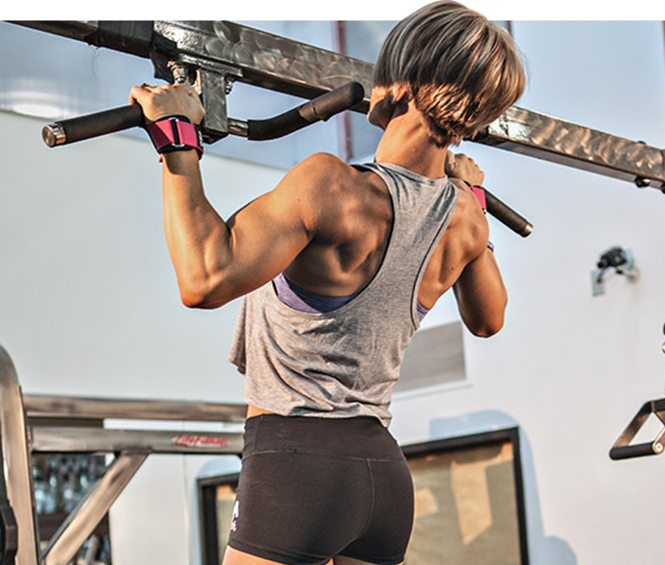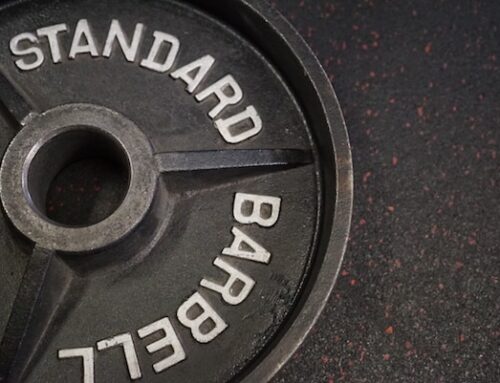Get in the gym and move weight from A to B sounds simple, right? Not quite. It all comes down to the form and intention in which you do it. Ever see someone doing Lat pull-downs, rows or pull-ups swinging around and/or bouncing? All that energy is NOT putting the maximum tension on your muscles. It’s just using momentum and inertia just to start the movement off with that awesome heavy weight that looks so cool. If your goal is to lift the heaviest weight in the gym that session – no matter what it takes – then keep swinging and bouncing…but if your goal is to build a beautiful physique and put some muscle size and width onto your back, keep reading.
Breaking Down The Movement
You can break all of your weight training movements into three sections:
1) The positive (lifting, pulling, pressing or pushing of the weight)
2) The contraction (the peak contraction, or, squeeze at the top of the movement where the muscle is fully contracted)
3) The negative (lowering of the weight)
Surprising to some, you have the most strength opportunity during the negative part of the movement—this is when you have to recruit all of your strength, focus and energy to control the weight as it lowers. The next time you’re performing a set of any exercise, try exploding through the positive portion and put most of your energy and focus into the negative—lowering the weight about 2x slower and thinking about which muscles you are using to control the speed and weight. A lot of times, this is where the homework is. You’ll probably find that you are using a lot of other muscles to help lower the weight. If that is the case, lower the weight A LOT and try it again. You’ll have an “a-ha” moment when you finally get the weight light enough to feel the exact muscles you are trying to work actually DOING the work through the negative portion of the rep.
Stimulating The Back Muscles
The basic function of the Latissimus Dorsi (lats), without getting overly technical, is to bring the arms down from an overhead position (think pull-downs and pull-ups) and to bring the arms back from in front of the body (think rows). We all perform those exercises in the gym—so, why do we continue to have so much trouble thickening and widening our backs?
Many women come to me wanting to compete in a figure competition, but most do not have the back development needed to stand out on stage. A great deal of work and effort has gone into their shoulders, legs and abs—and you can see that right away (and it looks gorgeous!). Just as many intense training days have gone into their back as well, but so many have no idea how or what it feels like to “flare the lats.” When they try to do this, I see a lot of shoulder blades sticking out or squeezing together, traps flexing, shoulders shrugging, etc.
Because you can’t see your backside, it becomes underdeveloped compared to the front side, which you can see and watch get pumped up during your workouts.
Wide Grip = Wide Lats?
The back is far too complex to think that doing every back exercise with a wide grip is the answer to developing wide lats. What many women don’t realize is that the lats actually insert into a tiny spot under the armpits, wrap around the whole outer middle part of your back and insert at your lower back near the waist. Many confuse the lats with the Teres Major and Minor. The Teres Major assists the lats in its movements, so it works in conjunction with the lats and is usually the muscle that gets sore on back day if you do not have a solid mind-muscle connection to your lats—or, if you do everything with a wide grip.
Using a wide grip does not provide anywhere near a full range of motion for the lats. A narrower grip, in contrast, allows both a better stretch and a more complete contraction for the lats.
Try this out on your next back day: Sit at the lat pull-down machine with a wide grip handle attachment. Set the weight to moderate for you. Take a very wide grip and just contract the muscles as if you are just about to pull the weight down. Which muscles are activated? Your Teres Major. Now, take an underhand and much more narrow (right at or a bit less than shoulder-width) grip and do the same thing. Which muscles activated? Your lats.
Nailed It, But What About Biceps?
You also probably noticed in the last experiment that your biceps were working hard too. This is good AND bad. The good part is that you indirectly train your biceps on back day, so you won’t need an entire workout dedicated to bicep training. The bad part is that if your back is weak and underdeveloped, you will tend to use your biceps, arms and front delts A LOT during your back exercises.
On all of your back days, work your mind-muscle connection — train yourself to put emphasis on where your arms and elbows are during ALL back movements. You can do all the pull-ups and pull-downs you’d like, but if your arms and elbows are out in front of your torso during the movement, you are working your arms and front delts, NOT your back. If your arms and elbows are in line with or behind your torso during pull-down/pull-up movements, you will feel a HUGE difference! You can try that right now without any weight just by putting your arms up in the air and simulating a pull-down with arms in front of your torso and behind.
The other thing you can do is use straps and/or hooks. You can use traditional weight lifting straps or other gloves or hooks made for lifting. These products reduce the strain on your grip, whether lifting light or heavy, allowing you to focus on just pulling with your back muscles.
To watch my video demonstration of me performing pull-ups with a whole lotta mind-muscle connection going on and my elbows clearly behind my torso PLUS a full workout,







Leave A Comment
You must be logged in to post a comment.